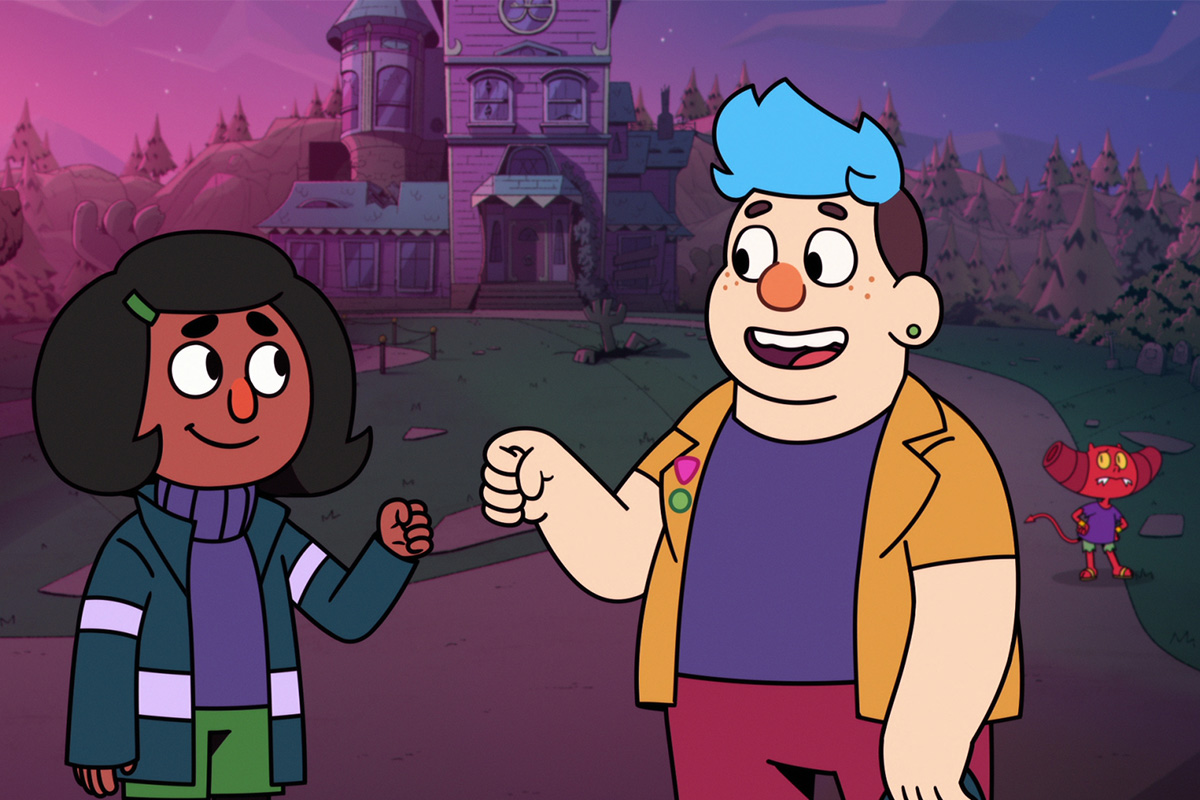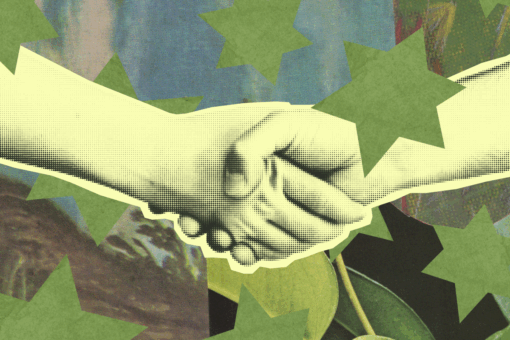In June, Netflix released “Dead End: Paranormal Park,” an animated show set in a haunted Dollywood-esque theme park. There are two protagonists — Barney, who is Jewish, trans, gay and fat, and Norma, who is Pakistani, neurodivergent and has severe anxiety. There is also a very good talking dog, supernatural mysteries, found families, a plot-critical musical episode and an exploration of hero worship and hyperfixation.
I’ve never felt so seen watching a show.
I grew up a queer fat Jewish kid in rural Southern Oregon, raised primarily by non-Jewish parents, and going to school with “South Park” fans who’d ask about my Jew gold. My siblings and I traveled to Portland once a month to spend a weekend with my Jewish father and stepmother. I cherish childhood memories of Hanukkahs and Passovers, latkes and cholent and hearing my dad weave English and Ladino into phone calls with my safta. Then we’d inevitably return to the remote beauty of the countryside, where for years a friend told me I would go to hell, but she’d put in a good word with God for me when she got to heaven.
My primary connection to Jewish culture as a child was through the media I consumed. I’d watch the Hanukkah episode of “The Rugrats,” sing “Fiddler on the Roof” and “Prince of Egypt” songs, or mouth Robin Williams’ lines in “The Birdcage” while folding laundry. With many characters, I’d connect with one element of who they were, but frequently, other aspects of my identity were invisible — or mocked.
“Dead End” is the first time I’ve seen so many intersections of my identity in one place, handled so respectfully, authentically, and joyfully.
Though Barney never says he’s Jewish, it’s woven throughout the story lines. During a Christmas in July episode, his talking dog Pugsley says “I didn’t know we celebrated Christmas!” while Barney pointedly wears a blue Star of David sweater. Later, Barney daydreams about plans for a wedding to his crush, wearing a yarmulke and breaking a glass (a favorite memory from my own wedding). There are “Friday night” brisket dinners with his family. It’s rare to have a main character on screen be Jewish, as well as trans, and gay, and fat. None of these parts of his identity are mocked, but referenced in ways that feel authentic to lived experience. At one point, when asked why he should be selected as a flesh vessel for a demon, Barney gestures to himself and asks, “Flesh?”
The second protagonist, Norma, spent her life handling extreme social anxiety by becoming a mega-fan of Pauline Phoenix, the film star the paranormal Phoenix Parks is based on. In the third episode, during a trust fall exercise, Norma chooses to fall forward because she “couldn’t be sure” she’d get caught, gets overstimulated and tells people not to look at her, and later on defeats a demon who feeds on others’ fears with the power of how much anxiety she experiences. It is a central moment, because without her seeing, talking about, and accepting that her “fear world is the real world,” her friends would have been stuck forever. To see her experience of neurodivergency presented without mockery — and as an essential part of the story — was an unfamiliar, beautiful breath of fresh air.
I watched this series for the first time a year after coming out with she/they pronouns, and over a decade after coming out as queer and being diagnosed with anxiety. After watching “Dead End,” I read the original webcomic that preceded the graphic novels. In the comments of one strip the creator Hamish Steele wrote, “I’m Norma in this story and it was a way for me to explain how my anxiety and ADD manifested.” I froze mid-scroll, thumb locked to the screen. I’d been diagnosed with ADHD a week prior to watching the show. It had seen me more than I’d even known on the first look.
The show also hits hard on family dynamics. Throughout the first season, tension rises with Barney’s family, after he moves out of his parent’s home following a dinner where his grandma said something awful about him being trans, and neither parent defended him. First, his brother Patrick is hurt and confused why Barney left, and then later his parents get impatient when Barney isn’t immediately satisfied after they say what they think are the right things. When he asks why they let his grandmother say awful things to him, they respond: “You know she’s difficult.” The show never specifically states what awful thing Barney’s grandmother said. It doesn’t need to. Any queer person knows.
Two years into a pandemic where I’d slowly started visiting my family less and less, the conflicts felt deeply relatable. The first time I watched the ending, I found my eyes unintentionally filling with tears during what’s supposed to be a happy resolution, wishing for the neatness of a plot’s narrative conclusion as compared to the messy and constant work real-world relationships require.
There are layers upon layers of homage to different pieces of media in the show, from Scooby Doo to Liza Minelli to the Addams Family. The surface level story is a rollicking good time, but there are beautifully subtle references you can catch in every episode. It does a brilliant job of displaying how media and entertainment have become intrinsically linked to culture and identity today. Art has been a part of how humans have contextualized their experiences for years, but modern media can do so on a much larger scale than our ancestors could have imagined. A story can travel miles in milliseconds. With the internet allowing for information sharing with less gatekeeping than decades past, more unique and diverse perspectives are being shared than ever before.
In a pivotal moment, Norma sings “you’re my Frankenstein, and I’m your monster.” As I watched, I found myself thinking about how we’re shaped by the stories we consume. They allow us to see and be inspired by circumstances and points of view outside our own. It can be a mirror, highlighting characters and stories familiar to us, and giving shared touchpoints to a culture. During World War II, American soldiers would suss out spies by asking who Mickey Mouse’s girlfriend was. In “Dead End,” Norma is shown always wearing a barrette placed in the exact same location as a young Pauline Phoenix in an early film. I still tie up my hair instinctively when concentrating after years of mimicking Violet Baudelaire.
Seeing so many aspects of my identity presented in this one show felt like a gift. It made me realize how little of the media I encountered growing up treated the totality of identity, and how powerful intersectional representation can truly be. Stories have the potential to change how we move through the world, how we interact with others, and crucially, how we treat ourselves. If the only time you’re seeing aspects of your identity represented is as the butt of a joke, it doesn’t exactly make you feel good. But seeing someone fully like you represented as a hero? It makes you feel like you could do anything. Like you’re worth being the main character in your own life.
For that reason, I’m so glad this show exists. I’m grateful other queer fat Jewish kids, especially those who are not cis, get to feel seen and supported by it like me. There’s real power in “Dead End” highlighting and celebrating a diverse, intersectional, incredible cast of characters. It feels especially important today when attacks are on the rise for both Jewish and queer, especially trans, folks. The world needs more shows like “Dead End.” I know I do.



